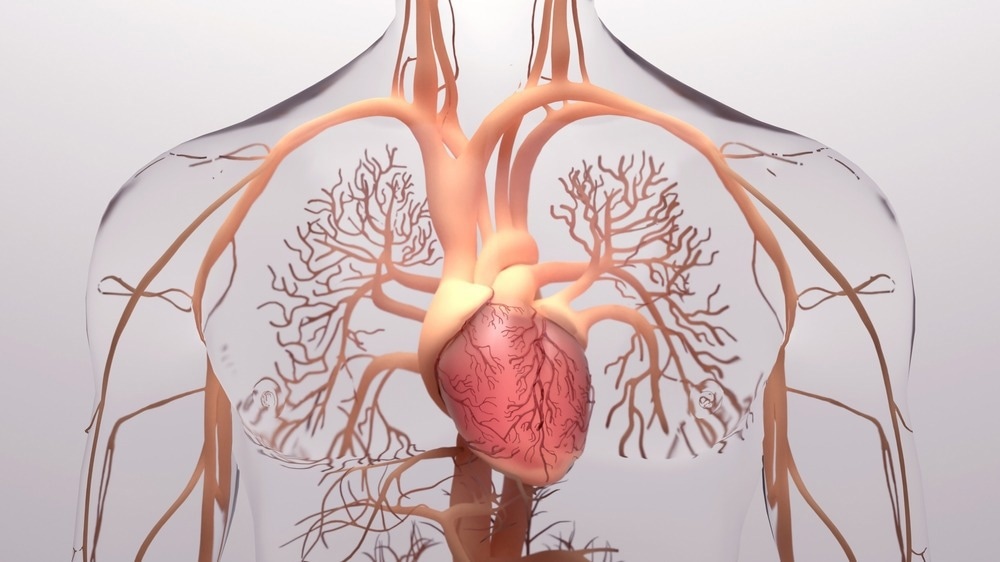A recent IDcases journal study presents the first known case of myocarditis as a monkeypox virus (MPXV) infection complication.

Study: Monkeypox Associated myocarditis: A case report. Image Credit: Design_Cells / Shutterstock.com
Viral myocarditis and MPXV infection
Myocarditis is an inflammatory condition of the heart. Myocarditis begins with the direct infiltration of an infectious agent and its proliferation inside or around the heart, subsequently resulting in myonecrosis. Multiple infectious and non-infectious factors contribute to the pathogenesis of this condition.
Heart failure has frequently been associated with a viral infection. In addition, viruses are the most common cause of infectious myocarditis, thus leading to the term 'viral myocarditis' in these cases.
Several western countries have recently reported outbreaks of MPXV, a zoonotic virus belonging to the Orthopoxvirus family. Infection with MPXV, typically endemic to Central and West African countries, typically causes flu-like symptoms that last for about five days, followed by eruptions of deep-seated and well-defined dermal lesions.
The ongoing MPXV outbreak appears to have been facilitated by person-to-person contact, particularly among men who have sex with men (MSM). However, despite this association, the spread of MPXV through sexual contact has not been confirmed.
Close contact with infectious materials is the most significant risk factor for the transmission of MPXV. Although MPXV infections are typically self-limiting, serious consequences are not uncommon, such as secondary infections, infections of the cornea causing loss of vision, and encephalitis.
Smallpox vaccination, which has been associated with myocarditis in the past, harbors the vaccinia virus, which is also from the Orthopoxvirus family. Since MPXV is closely related to the vaccinia virus, MPXV may also be associated with myocarditis.
Case report
The current study provides a case report on a 34-year-old man hospitalized for emergency treatment. On June 28, 2022, the patient presented with a 48-hour fever, chills, and chest pain history.
The pain was described as continuous, sharp, and did not radiate; however, it appeared to intensify over time. Additionally, the pain was exacerbated when the patient was lying down and was relieved when in an upright-seated position.
The patient did not have a significant medical or drug history or allergies. However, he had a history of tobacco and methamphetamine use.
The patient's coronavirus disease 2019 (COVID-19) polymerase chain reaction (PCR) test was negative. Notable findings included a low blood pressure of 95/65 mmHg, a pulse of 116 beats per minute (bpm), C-reactive protein (CRP) levels of 154.5 mg/L, increased white blood cell (WBC) counts of 13.9 x 109/L and a high-sensitivity troponin concentration of 211 ng/L.
Electrocardiogram (ECG) results showed sinus tachycardia with anterolateral concave ST-segment elevation, thus denoting pericarditis. In addition, chest X-ray imaging revealed non-specific retro-cardiac opacities.
Initial treatment approaches
Based on clinical suspicion, blood cultures were suggested. Empirical treatment was commenced with the antibiotic combination piperacillin-tazobactam. A provisional diagnosis of myopericarditis of unknown etiology was determined, and antibiotics were discontinued.
A transthoracic echocardiogram revealed standard left ventricular (LV) size and a slightly decreased LV ejection fraction of 44%. A coronary angiogram did not indicate coronary artery disease or any signs of vasospasm.
Magnetic resonance imaging (MRI) of the heart depicted a mildly decreased LV ejection fraction, along with mild dilation of the LV. In addition, high extracellular volume was also indicative of myocardial edema. Thus, the presumptive diagnosis of myocarditis of an unknown etiology remained.
Hereafter, the patient was prescribed an angiotensin-converting enzyme (ACE) inhibitor to treat LV dysfunction. However, beta-blockers were not advisable for this patient, as he had a history of polysubstance abuse.
Treatment following MPXV diagnosis
The patient also reported genital lesions that had first appeared on June 25, 2022. The patient self-identified as heterosexual and admitted to participating in unprotected sexual activity with a new female partner a few weeks before the appearance of the genital lesions.
He also reported having shared used linens at a friend's house, whom he considered homosexual. Lesion samples underwent PCR analysis, while the pubic lesion was examined for Simian Orthopoxvirus.
Acyclovir was subsequently administered. At this stage, the adult male patient was isolated in a negative pressure chamber before the results were obtained. Standard doses of ceftriaxone and azithromycin were also provided.
The patient tested positive for Chlamydia, in addition to confirmation of Simian Orthopoxvirus in the pubic lesion. According to recommendations provided by the United States Centers for Disease Control and Prevention (CDC), in conjunction with the likelihood of concurrent myocarditis after MPXV infection, the patient was prescribed tecovirimat for 14 days. Acyclovir was withdrawn immediately after the patient was confirmed negative for Herpes simplex and Varicella zoster viruses.
In the days that followed, the patient's clinical condition improved. There were no neurological, ocular, or other complications.
Following the resolution of crusted lesions and inguinal adenopathy on July 6, 2022, the patient was removed from isolation and transferred to a normal air-pressure ward.
After that, CRP and troponin levels improved. Furthermore, the patient remained afebrile and showed no signs of heart failure.
Conclusion
The current study reported Simian Orthopoxvirus infection with concurrent myocarditis. These findings indicate a possible link between MPXV infection and myocarditis; however, additional research is needed to evaluate this complication and its association with MPXV infection fully.
The current MPXV outbreak highlights the importance of monitoring the signs of viral infection in myocarditis patients. This will ensure better treatment and prevent transmission within communities by implementing suitable isolation measures to prevent future outbreaks.
This case report shows that MPXV can cause cardiac symptoms. This discovery will likely assist doctors in making appropriate diagnostic and treatment decisions.
Journal reference:
- Brouillard, P., Valin-Thorburn, A., Provost, Y., et al. (2022). Monkeypox Associated myocarditis: A case report. IDCases. doi:10.1016/j.idcr.2022.e01628